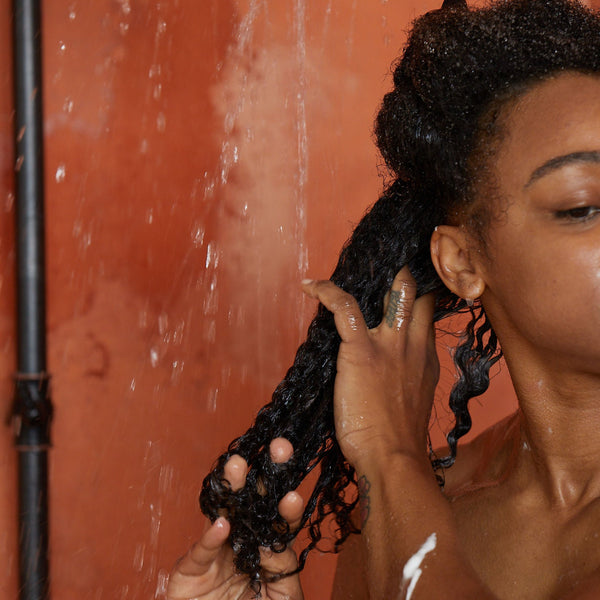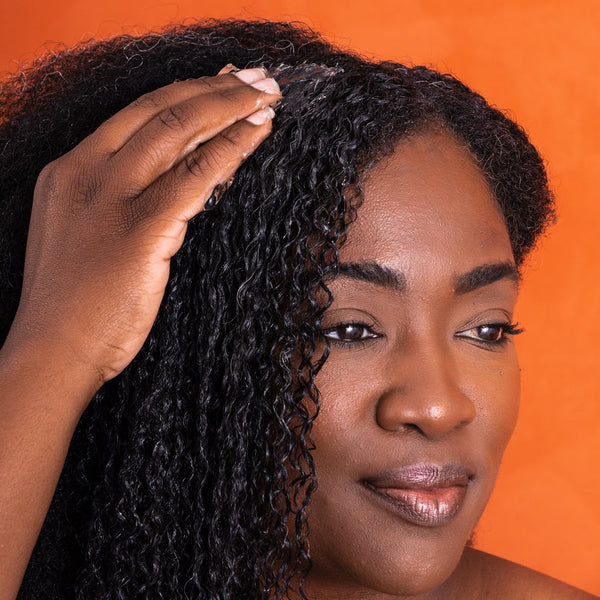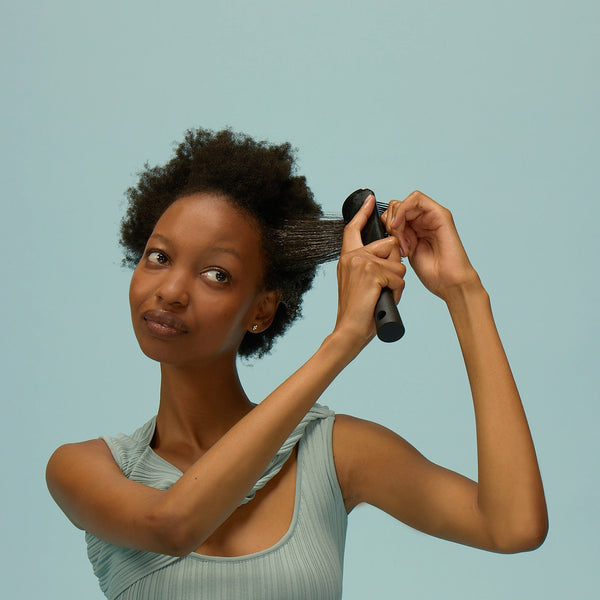By Ebony Bomani
When it comes to cutting curly hair, there's no such thing as a quick trim. Whether the stylist cuts each curl one by one when dry, or straightens before grabbing the shears, curly cuts can be daunting. But they shouldn't be.
First things first, let's start with the basics. A typical curly cut is when your curls and coils are cut dry and in their natural state, or when a wet haircut is customized specifically for curls, coils & tight textures.
Types of Hair Cuts
Cosmetology school teaches cutting techniques that are generally identified by the method(s) and angles used to achieve the final look (i.e., square layers, round layers, natural graduation, long layers, one length, etc.). A great stylist always takes hair texture + type, head shape, facial structure, and even body composition into consideration when designing a haircut for someone. Being that the curly world is its own community, many hair stylists/salons have developed their own approach to cutting curly hair. There are three types of cuts that come to mind, first!
The Deva cut, informally known as a curly cut, was made popular by DevaChan Salon in NYC. Their cutting technique involves cutting each individual curl, one by one. As does the Rezo cut, created by Nubia Suarez. However, the Rezo cut seems to be more compatible with a wider range of hair texture types. It also focuses on length retention and an even cut, so you can alternate between straight hair and curly hair with confidence.
Ouidad trademarked the Carve and Slice cutting technique, which is done on wet hair, to enable the curl specialist to create and showcase a more effective haircut.
Since those curly cutting techniques emerged, several more have stepped into our hearts and onto our heads.
Wet vs. Dry Cutting
The point of dry cutting is to be able to see, ahead of time, where the curls land once they're styled. Depending on the hair type and texture, dry cutting may be more favorable for a uniform, finished look.
Cutting some curl types while wet allows the hair stylist to give a more precise cut while taking shrinkage into consideration. More importantly, if the curly locks are damaged, wet cutting enables the damage to be more visible to the hair stylist so he/she can trim it away.
How to Know What Would Work for You
A thorough consultation with a professional, especially one who specializes in curly hair, will help guide you to make the best decision. A majority of stylists will ask you how you mostly wear your hair. If you have curly locks, you may be a good candidate for a curly cut. If you have an inconsistent natural curl pattern throughout the head, it's more likely for it to be unnoticeable in its curly state with a dry cut. If you wear your hair straight more often, the unevenness could be on front street, depending on the curly cut you choose. Compared to tighter curls, looser curls that look nearly straight when wet may benefit more from a wet cut, as there's less shrinkage once it's dry. For the curly girl with highly textured hair, a light blow-out would be beneficial for visibility of the full strand and the current shape of the hair. If it's severely uneven, it could be hidden by the shrinkage.
How Often to Get a Cut
The frequency of your haircuts depends on your desired length and how well you care for your hair, but the average time frame between haircuts for medium to long hair lengths is every 3 to 4 months. If you prefer to keep it short, getting a curl cut every 3 to 6 weeks would help keep the hairstyle fresh.
How to Do-It-Yourself (Gasp!)
I'll always recommend leaving the cutting to a professional curly hair specialist. However, if you just have to DIY, use super sharp hair-cutting shears. When doing a curly trim or cut at home, only handle the hair with light tension and cut into the "C" of each natural curl. For tighter textures, I suggest blowing out the hair first, then snip, section by section.
The way our curls, coils & tight textures grow from our scalps make our hair frame our heads like a glorious halo. As some curl pattern types get longer gravity gives it hang time, and the shape disappears. Part of the fun of having big hair is having the freedom and curl-fidence to rock shapes that give our natural hair texture the extra boost that it needs and the volume it craves. Don't be afraid to explore!
Ebony Bomani is a licensed cosmetologist, textured hair enthusiast, content creator & brand educator. Connect with her about healthy hair care & green beauty-related topics via Instagram or LinkedIn.



